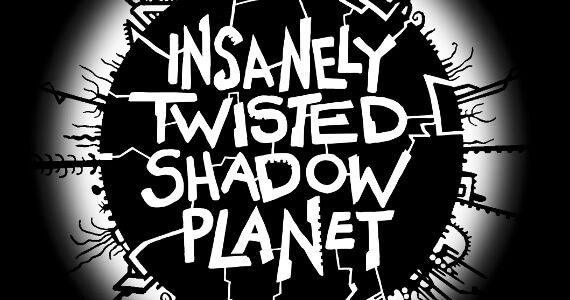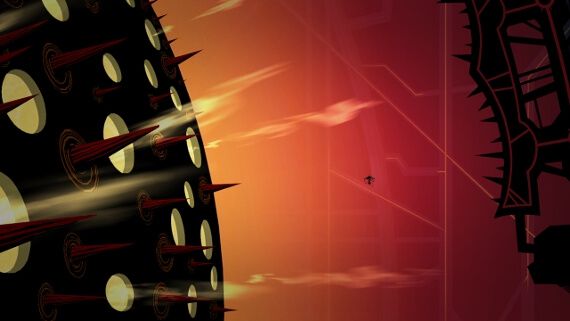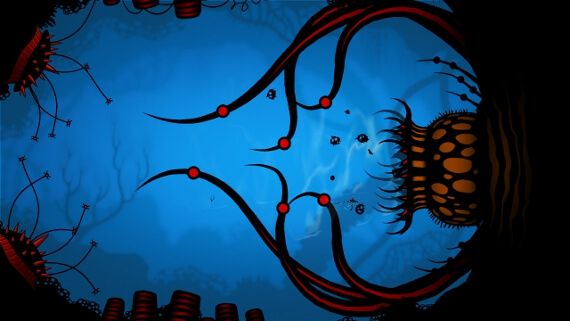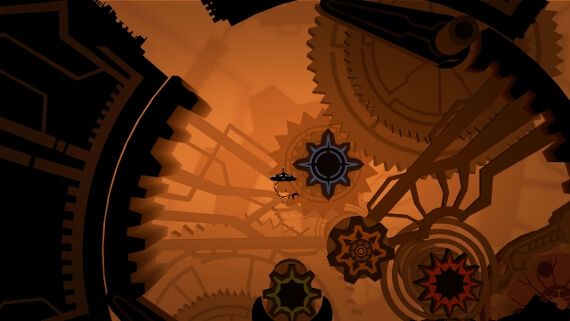Game Rant's Steve Pendlebury reviews Insanely Twisted Shadow Planet
For all its budget-title trappings, Microsoft's 'Summer of Arcade' initiative has been responsible for some of the best games this console generation has seen. From the rambunctiously audacious Trials HD to the unsettling and atmospheric Limbo, the Summer of Arcade has built a reputation for giving gamers premium-grade experiences at a quarter of the cost of their retail cousins.
Now in its third consecutive year, 2011's Summer of Arcade is on-track to be the best yet, kicking off with the brilliantly-soulful Bastion, and last week's release of the unique and inspired god game From Dust.
This week sees the third Summer of Arcade title, the wonderfully-titled Insanely Twisted Shadow Planet, could very well be Summer of Arcade's finest hour.
The story of Insanely Twisted Shadow Planet is simple enough. An adorable little extra terrestrial is minding his own business when, suddenly, a dark and brooding alien planet appears in the sky and begins to spurt out meteors at his home world. As these black meteors hit and begin spreading their corruption across his fair land, our cuddly hero jumps into his UFO and flies off to the Insanely Twisted Shadow Planet itself, in the hopes of ending the attack.
Gameplay is strictly a 2D scrolling affair, fueled by exploration and combat. The term 'Metroidvania' is a little dated, so instead I'm going to use this horrible term I just invented -- 'ArkhamShadowBatmanComplex'.
Popping open the map with the Select button displays the world map. The Shadow Planet itself is vast, and more than a little intimidating - broken into seven uniquely different areas, players will experience subterranean caverns covered in ice, festering swamplands bubbling with acid, mechanical engine rooms full of cogs and other industrial contraptions, and then you'll encounter places so bizarre that it's difficult to produce a good earthly reference point to describe them.
These themes extend beyond just window-dressing, though, and also inform the fundamentals of the puzzle design in each area, as well as influence the wide and varying bestiary of antagonists players will face along the way. For example, the 'Mech' area is an industrial construct filled with cogs, rotating gears, pressure plates and conductive electricity. The swamplands, by contrast, are organic in nature. Half-submerged in water and covered in aggressive plant life, the puzzles herein are primarily liquid-based.
Scattered throughout the Shadow Planet's vast, cavernous network are collectible telescopic attachments that expand your UFO's range of abilities when obtained. Initially, these attachments are fairly tame in nature, such as a scanning beam that can be fired at suspicious objects to gain information on how best to interact with them, and a 1950s-era ray gun that, obviously, shoots things. Once players acquire the grabbing claw attachment, however, the gameplay opens up exponentially - enabling intriguing physical interactions with the environment. The grabbing claw can be used to snag enemies, move rocks, pull levers and even tether the UFO to a hard surface when the wind picks up - so as not to get blown away.
There are nine telescopic attachments in total and represent a mix of weapons and tools - and some of the later ones are especially cool. Each attachment's discovery brings with it a new ability, not to mention a host of new puzzles and and obstacles that need to be overcome through its use. Additionally, earlier (but inaccessible) areas will gradually open up as new weapons or tools are acquired - capable of removing obstacles that may have previously hindered progression. As mentioned, very ArkhamShadowBatmanComplex.
Because of this, each new acquisition is a little like Christmas. Since the ultimate objective of the game is left open and somewhat nebulous, acquiring the next piece of tech and upgrading the spaceship becomes the primary driving force behind exploration - whenever the player chances upon a new toy, it is a real treat.
A twin-stick control scheme runs the show here -- the right stick facilitates movement of the ship whereas the right stick controls the aiming of the telescopic attachments. Activating the attachments is done with the right trigger. Either shoulder button will bring up a radial attachments menu, while the right stick is used to select one of the nine attachments. Managing nine separate modes of attack and/or defense in the heat of a boss battle or a particularly involved physics puzzle can be challenging, but the ability to map four attachments to the face buttons does help alleviate some of the frustration. I found myself frequently stopping to recalibrate my face button loadout throughout the game, but found this to be a tactical and engaging aside - rather than a tedious requirement.
There is only one difficulty setting but it offers a fair balance. Every enemy has a pattern and a weak spot, but they vary wildly, so each encounter is a tactical one. On a few occasions endlessly-respawning enemies were a huge buzz-kill, though, especially when trying to execute a tricky physics-based sequence of actions in order to complete a puzzle. That said, perseverance does pay off in this game and, more often than not, changing tactics is a smart cure for especially difficult situations.
What begins as a fairly traditional twin-stick shooter -- albeit with exceptional graphical panache -- soon shows its depth. The arrival of each new attachment brings with it a fresh new layer of gameplay mechanics for players to experiment with and revel in. The style of each geographical area is filled to bursting with brilliant, inventive puzzle mechanics tailored to that aesthetic, and even the boss encounters require non-lateral thinking and a keen eye to spot patterns players will need to exploit.
Each isolated component of the game is technically proficient. The animation across the board is silky smooth and very reminiscent of an animated picture. The handling of the UFO is great - every attachment is enjoyable and responsive. Most aspects of Insanely Twisted Shadow Planet are nothing less than 100% polished. That said, while the audio is reminiscent of Limbo's subtle soundscape, Insanely Twisted Shadow Planet could have benefited from a more robust aural pallet. Although music ratcheted-up tension in the final sections of the game; overall, despite a rich visual offering, the audio component of the title was pretty empty.
Unfortunately, there isn't a ton of replay value, since the multiplayer mode isn't much to get excited about. It's hard to think of how multiplayer could have been implemented within the game's framework in a compelling way - so, aside from giving players a reason to come back, Insanely Twisted Shadow Planet probably doesn't need it. The "Collect the Lamps" mode, which allows more than one player to race around collecting lamps for a high score - which they can then compare against friends via online leader boards. It's a simple mode with minute value - and may entertain some players for a bit - though it's unlikely to be a real draw.
In the end, Insanely Twisted Shadow Planet will give you that ArkhamShadowBatmanComplex style of gameplay we all love so much, and saturate the proceedings with Michel Gagne's individual visual stylings and aesthetic - truly unique and beautiful. The depth of gameplay possibilities delivered to the player by the nine attachments are enjoyable - as are the mind-bogglingly inventive enemy and boss designs. Insanely Twisted Shadow Planet is an expertly-crafted jigsaw puzzle of a game, in which each area is different and distinct in its own right. Yet the pieces all slot together to form a cohesive single product - that is one of the more enjoyable and artistic game experiences in recent memory.
Insanely Twisted Shadow Planet is out on Wednesday August 3rd on Xbox Live Arcade




